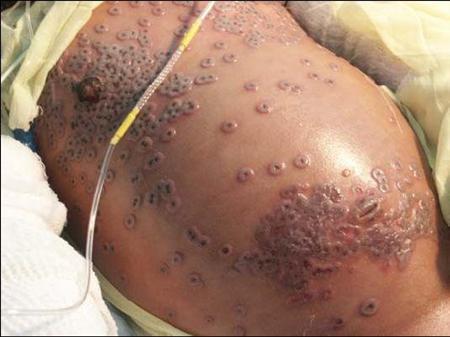Smallpox: Complications, Diagnosis, Treatment And Absolute Prevention
The Health Implications Of Small Pox On Various Body Parts

Complications And Diagnosis Of Small Pox
Complications
Secondary infection by staphylococci occurs during the stage of postulation. This may lead to septicemia, pneumonia, osteomyelitis, septic arthritis, otitis media and pyelonephritis. In the eye, vesicles in the cornea may suppurate and lead to panophthalmitis and blindness. Smallpox was a common cause of blindness in India till some decades agon.
Neurological complications include demyelinating lesions such as encephalitis, encephalomyelitis and peripheral neuritis. Laryngeal edema may occur, leading to respiratory obstruction.
Osteomyelitis variolosa: In this form of destructive osteomyelitis, the metaphyses are infected with the virus during the phase of viremia, but symptoms are late to develop. Destruction and detachment of the epiphyses lead to permanent bone and joint deformities which persist in later life.
Course and prognosis: Till the middle of this century, smallpox used to be a major killer among children with a mortality of 20 to 80% among unvaccinated subjects. Death is due to severe toxemia or secondary infection.
Diagnosis
Clinically, smallpox should be suspected when an unvaccinated person gets high fever with prodroma and rash occurring on the third day. The distribution and progress of the rash strengthens the diagnosis. Since the world has been declared free of smallpox, physicians have to be alert to detect initial cases and subjects them to thorough laboratory investigations. By international agreement, reporting of fresh cases to the health authorities carries a cash award. Chickenpox, drug rashes and erythema multiforme are to be differentiated from small pox. Rickettsial pox and pustular syphilis may resemble mild cases of smallpox sometimes.
Laboratory diagnosis:
- Demonstration of the virus in materials from vesicles or crusts by electron microscopy.
- Identification of Guarnieri bodies from the vesicular material.
- Demonstration of viral antigen by complement fixation or gel precipitation test using material from any stage of the lesion or blood in the pre-eruptive stage.
- Isolation of the virus.
Treating Small Pox

Infectious Diseases
Treatment And prophylaxis Of Small Pox
Treatment
The treatment is mainly supportive. Antibiotics are used when secondary bacterial infection occurs. After exposure, the attack can be prevented by administering methisazone in a dose of 1.5 to 3g twice daily for four days. Methisazone offers protection in unvaccinated individuals but it has no curative effect when the disease is manifest. Vaccines immunoglobulin can be administered and it has a protective role. Early notification of cases, strict barrier nursing and large scale immunization of the surrounding population should be undertaken to prevent the spread of the disease. Since the vaccine is not at present available for regular use, vaccination program have to be undertaken by the appropriate health authorities.
Prevention
Vaccination is the most effective method to prevent smallpox. It was introduced by Edward Jenner on May 14, 1796. Since the world is declared free of smallpox, regular vaccination of infants is not insisted upon at present. The vaccine contains killed or frozen dried vaccinia virus. Though generally safe, rarely complications occur. These include generalized vaccinia, secondary infection, eczema vaccinatum, progressive vaccinia (Vaccinia gangrenosa) and post-vaccinial encephalitis.
© 2014 Funom Theophilus Makama









